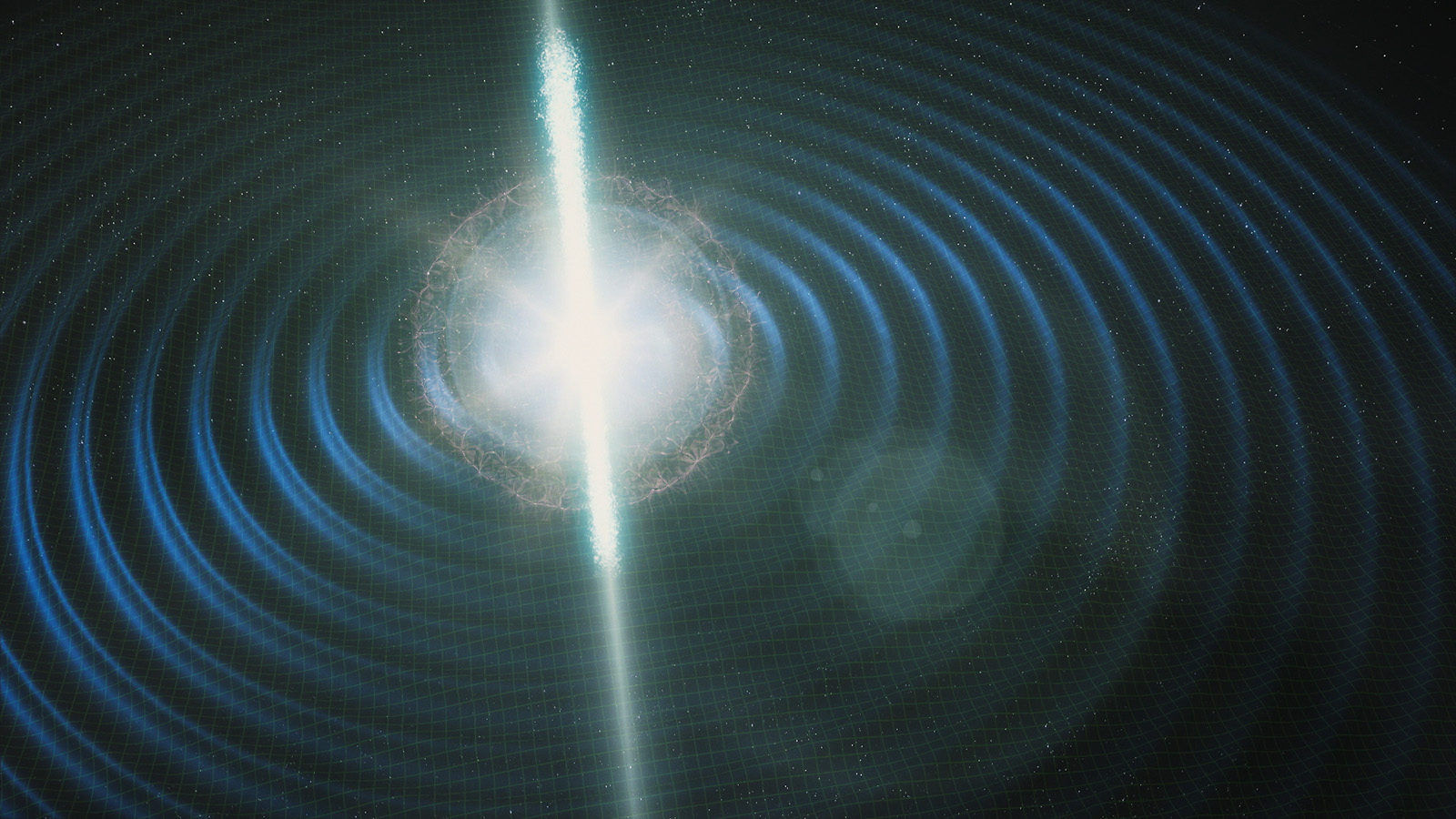Today scientists announced the first verified observation of a neutron star collision. The Laser Interferometer Gravitational-Wave Observatory, or LIGO, detected gravitational waves radiating from two neutron stars as they circled and merged, triggering 50 additional observational groups to jump into action and find the glimmer of this ancient explosion.
This observation represents the first time experiments have seen both light and gravitational waves from a single celestial crash, unlocking a new era of multi-messenger astronomy.
On August 17 at 7:41 a.m. Eastern Time, NASA astronomer Julie McEnery had just returned from an early morning row on the Anacostia River when her experiment, the Fermi Gamma Ray Space Telescope, sent out an automatic alert that it had just recorded a burst of gamma rays coming from the southern constellation Hydra. By itself, this wasn’t novel; the Gamma-ray Burst Monitor instrument on Fermi has seen approximately 2 gamma-ray outbursts per day since its launch in 2008.
“Forty minutes later, I got an email from a colleague at LIGO saying that our trigger has a friend and that we should buckle up,” McEnery says.
Most astronomy experiments, including the Fermi Gamma Ray Space Telescope, watch for light or other particles emanating from distant stars and galaxies. The LIGO experiment, along with the Virgo experiment in Italy, listens for gravitational waves. Gravitational waves are the equivalent of cosmic tremors, but instead of rippling through layers of rock and dirt, they stretch and compress space-time itself.
Exactly 1.7 seconds before Fermi noticed the gamma ray burst, a set of extremely loud gravitational waves had shaken LIGO’s dual detectors.
“The sky positions overlapped, strongly suggesting the two signals were coming from the same astronomical event,” says Daniel Holz, a professor at the University of Chicago and member of LIGO collaboration and the Dark Energy Survey Gravitational Wave group.
LIGO and Virgo scientists reconstructed the location and distance of the event and sent an alert to their allied astronomers. About 12 hours later, right after sunset, multiple astronomical surveys found a glowing blue dot just above the horizon in the area the experiments predicted.
“It lasted for two weeks, and we observed it for about an hour every night,” says Jim Annis, a researcher at the US Department of Energy’s Fermi National Accelerator Laboratory, the lead institution on the Dark Energy Survey. “We used telescopes that could see everything from low-energy radio waves all the way to high-energy X-rays, giving us a detailed image of what happened immediately after the initial collision.”
Neutron stars are roughly the size of the island of Nantucket but have more mass than the sun. They have such a strong gravitational pull that all their matter has been squeezed and transformed into a single, giant atomic nucleus consisting entirely of neutrons.
“Right before two neutron stars collide, they circle each other about 100 times a second,” Annis says. “As they collide, huge electromagnetic tornados erupt at the poles and material is sprayed out in all directions at close to the speed of light.”
As they merge, neutron stars release a quick burst of gamma radiation and then a spray of decompressing neutron star matter. Exotic heavy elements form and decay, dumping enough energy that the surface reaches temperatures of 20,000 degrees Kelvin. That's almost four times hotter than the surface of the sun and much brighter. Scientists theorize that a good portion of the heavy elements in our universe, such as gold, originated in neutron star collisions and other massively energetic events.
Since coming online in September 2015, the LIGO and Virgo collaborations have reported detecting five bursts of gravitational waves. Up until now, each of these observations has come from a collision of black holes.
“When two black holes collide, they emit gravitational waves but no light,” Holz says. “But this event released an enormous amount of light and numerous astronomical surveys saw it. Hearing and seeing the event provides a goldmine of information, and we will be mining the data for years to come.”
This is a Rosetta Stone-type discovery, Holz says. “We’ve learned about the processes that neutron stars are undergoing as they fling out matter and how this matter synthesizes into some of the elements we find on Earth, such as gold and platinum,” he says. “In addition to teaching us about mysterious gamma-ray bursts, we can use this event to calculate the expansion rate of the universe. We will be able to estimate the age and composition of the universe in an entirely new way.”
For McEnery, the discovery ushers in a new age of cooperation between gravitational-wave experiments and experiments like her own.
“The light and gravitational waves from this collision raced each other across the cosmos for 130 million years and hit earth 1.7 seconds apart,” she says. “This shows that both are moving at the speed of light, as predicted by Einstein. This is what we’ve been hoping to see.”
Editor's note: This article has been updated to better reflect the involvement of the Virgo collaboration. See LIGO scientific publications here.



